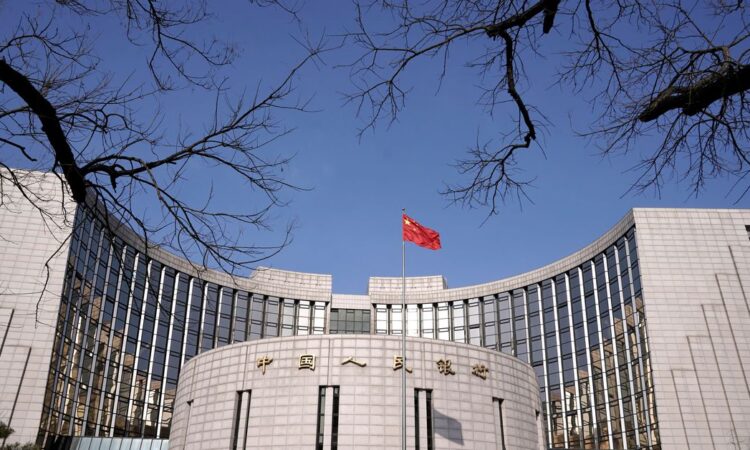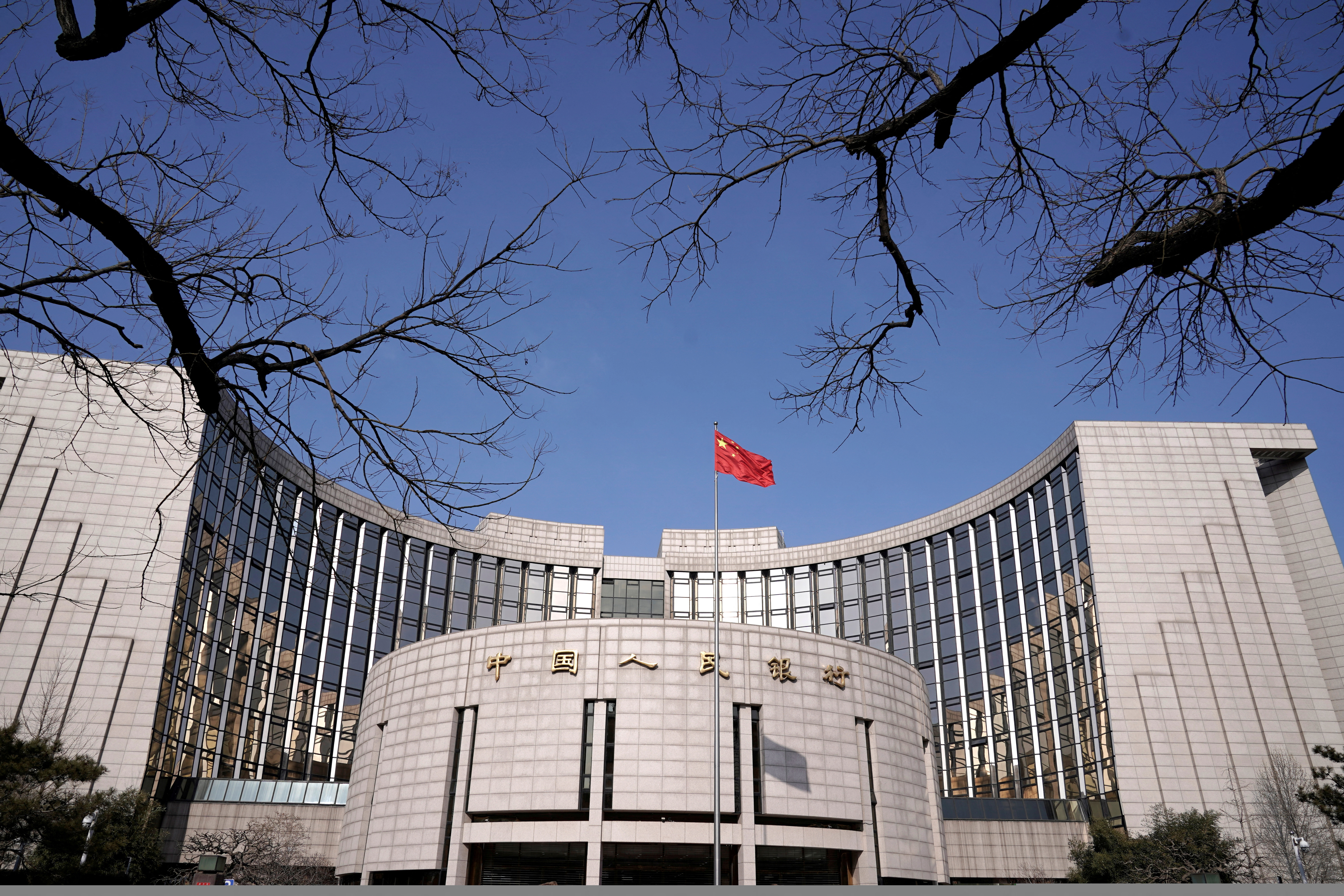

The headquarters of the People’s Bank of China, the central bank, is pictured in Beijing, China, February 3, 2020. REUTERS/Jason Lee/File Photo Acquire Licensing Rights
SHANGHAI, Sept 14 (Reuters) – China’s central bank is expected to boost liquidity while keeping the borrowing cost steady when rolling over its medium-term policy loans on Friday, a Reuters survey showed, after a string of data showed some signs of economic stabilisation.
China has already lowered the medium-term policy rate twice since June to stimulate credit demand and support a faltering economic recovery. But the monetary easing measures have widened the yield differentials with other major economies, particularly the United States, and have dented the yuan currency.
All 33 market watchers polled this week predicted that the People’s Bank of China (PBOC) would leave the interest rate on its one-year medium-term lending facility (MLF) loans unchanged when it is due to roll over 400 billion yuan ($54.98 billion) worth of these maturing loans this month.
Among them, 27, or 82% of respondents, forecast fund offerings would exceed maturity.
“Mild liquidity withdrawal or injection via MLF may not be of substance compared to the support measures announced so far; still, we would put the potential MLF amount at 400-420 billion yuan,” said Frances Cheung, rates strategist at OCBC Bank.
New bank lending in China beat expectations by nearly quadrupling in August from July’s level, as the central bank sought to shore up economic growth amid soft demand at home and abroad.
While recent data showed signs of stabilisation in an economy that has rapidly lost steam since the second quarter, analysts said more policy support is needed, particularly for the ailing property sector, to foster a durable recovery in growth.
To revive broad credit demand and rescue the troubled property sector, China unexpectedly cut the MLF rate last month.
“The PBOC’s decision to cut policy rates last month even as the renminbi approached a multi-year low against the U.S. dollar hinted at a slightly greater tolerance for currency weakness,” Julian Evans-Pritchard, head of China economics at Capital Economics, said in a note.
“But the significant step-up in FX intervention since then makes it clear that this tolerance is still limited. For this reason alone, it seems unlikely that the PBOC will embrace large-scale rate cuts.”
China’s yuan has lost more than 5% of its value against the dollar so far this year to become one of Asia’s worst performing currencies for 2023, prompting the authorities to step up efforts to slow the pace of declines.
($1 = 7.2759 Chinese yuan)
Reporting by Shanghai Newsroom
Editing by Shri Navaratnam
Our Standards: The Thomson Reuters Trust Principles.





